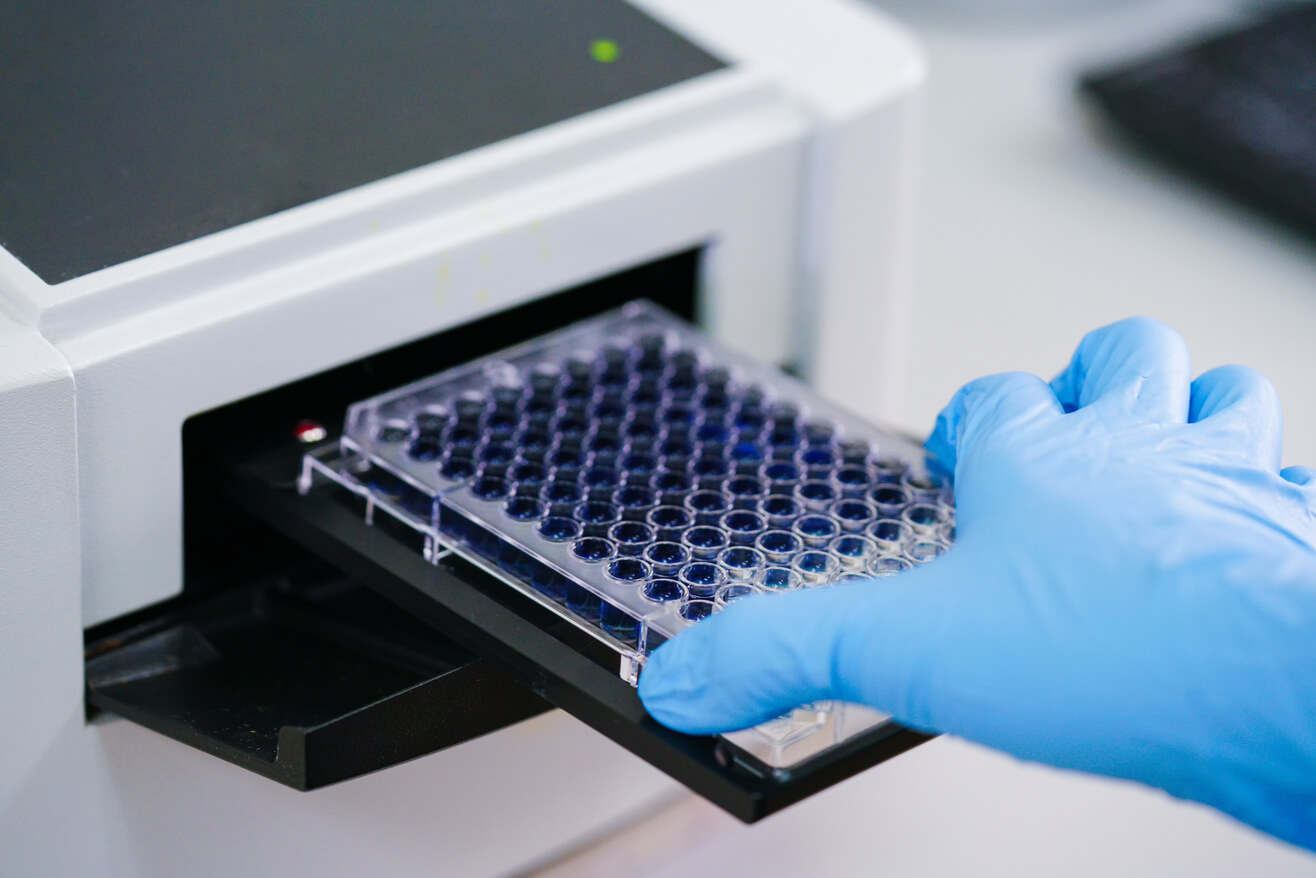ELISA is a plate-based method that can detect and quantify analytes, such as peptides, antibodies, proteins, and hormones, in complex biological samples. In an ELISA method, the target antigen is immobilized on the assay solid surface and complexed with a specific antibody linked to a reporter enzyme. The analyte is detected by estimating the reporter enzyme activity by incubating it with relevant substrates to generate a measurable product. Specific antigen-antibody interactions are the most crucial component of an ELISA assay.
Due to their versatility, ELISA assays have multiple applications, such as NAb assay development, pharmacokinetic evaluations, monoclonal antibody ELISA assays, and other drug development assessments. However, a robust ELISA method development and validation is crucial for ensuring reliability, reproducibility, and accuracy of experimental data. The current article is a comprehensive guide on ELISA development for multiple biopharmaceutical applications.
ELISA testing services for drug discovery and development
ELISA assays are a powerful tool to detect and quantify specific analytes in complex biological mixtures. Hence, ELISA labs focus on developing and validating assays for multiple biopharmaceutical applications. Generally, ELISA analysis uses 96 or 384-well polystyrene plates where proteins and antibodies are bound to the surface. This immobilization and binding of reagents to the ELISA plate makes it easy to develop and perform. Besides, immobilized reactants help differentiate between bound and unbound material during analysis. Moreover, the liberty to employ high-affinity antibodies and remove non-specific bound reactants makes ELISA assays a robust technique for measuring analytes in crude sample preparations.
Today, there are multiple variants of traditional ELISA assay. However, all these methods employ the following elements:
-
Immobilization of target analytes to the microplate surfaces, coating and capturing it for subsequent detection and quantification.
-
Blocking the plate by adding irrelevant analytes or other molecules to cover the remaining surface sites in the microplate wells. This step limits unspecific binding to the microplate wells.
-
Incubating analyte-specific antibodies with high affinity towards the target analyte
-
Measuring the signal generated through primary or secondary tags for specific antibodies
Alkaline phosphatase and horseradish peroxidase are commonly used enzymes in ELISA assays. Other enzymes, such as acetylcholinesterase, catalase, and beta-galactosidase, are also used. Today, a large library of substrates is commercially available, however, the choice of substrate is based on the required assay sensitivity and instrumentation availability.
There are different ELISA formats, including sandwich, direct, indirect, and competitive ELISA. There are two primary differences among these ELISA formats. The first difference is the immobilization step, where the target antigen is either directly adsorbed to the assay plate or indirectly through a capture antibody attached to the microplate. The second difference is in the detection technology. The analyte is either detected directly through a primary labeled antibody or indirectly via a secondary labeled antibody. Generally, the sandwich ELISA format is one of the widely used ELISA assays. This method indirectly mobilizes the antigen by capturing the target analyte between two primary antibodies while employing a secondary antibody to detect its presence.








